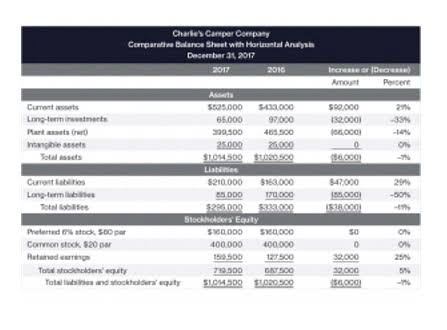
Bookkeeping is one of the most crucial and initial tasks related to a business. It’s been known for years that if the bookkeeping practices are adopted by any organization and followed perfectly, then the same can easily ensure steady and stable growth in a shorter period. Have a look at the entire thread to know what is the difference between single entry vs double entry bookkeeping.
- That means you can’t generate a balance sheet or income statement, which are mandatory for public companies.
- Whether debits and credits increase or decrease the balance depends on the account type.
- Here are a few examples of transactions that require Journal Entries.
- Under the double-entry system, both the debit and credit accounts will equal each other.
- The financial statements provide valuable information for stakeholders—including investors, creditors, management, and analysts—to assess the financial health and performance of a business.
In single-entry bookkeeping, you can actually keep a two-column ledger, one column for revenue and one for expenses. It’s still considered single-entry because there is just one line for each transaction. However, businesses have to keep a detailed accounting of their financial transactions. The survival of the business depends on the owner’s ability to establish good accounting practices. An advantage of the single-entry bookkeeping system is that it’s simple and straightforward.
What is double-entry bookkeeping?
The IRS reports that many individuals and small businesses use single-entry bookkeeping. Remember that the IRS prohibits companies with annual gross sales of over $5 million from using this method. It’s also possible to expand the above simple cash book into a more detailed record keeping.
Bagel.co moves funds between accounts that they operate on behalf of their customers. Customers 1-3 buy and sell bagels to each other, and cash out the balances of their accounts on your platform to external banks. As you can see, single and double-entry single entry bookkeeping vs double entry bookkeeping both have their uses, but most business owners find that one better suits their needs. Depending on your needs for simplicity, detail, and potential accounting insights, you may find a single-entry system works better for you—or vice versa.
Double-Entry Bookkeeping: The Comprehensive Accounting Method
Then, the double-entry reduces the amount the business now owes to the creditor account as it has received the amount of the credit the business is extending. However, most founders focus on setting up a system to pay vendors and record income as soon as possible and may not be aware they need to decide between single-entry vs. double-entry bookkeeping. In this article, you’ll learn what each of these approaches involves, how they compare, and which system best suits your startup’s situation. There are two types of methods that are most commonly used in bookkeeping. These include single-entry bookkeeping and double-entry bookkeeping.
You will note these transactions in a section of the business’s General Ledger. In a double-entry statement, you’ll see debits on the left-hand side and credits on the right. More specifically, a ledger database can store the current and historical value of a company’s financial data.
What Is the Definition of Single-Entry Bookkeeping?
Because the business has accumulated more assets, a debit to the asset account for the cost of the purchase ($250,000) will be made. To account for the credit purchase, a credit entry of $250,000 will be made to notes payable. The debit entry increases the asset balance and the credit entry increases the notes payable liability balance by the same amount. In accounting, a debit refers to an entry on the left side of an account ledger, and credit refers to an entry on the right side of an account ledger.
It ensures that each transaction is recorded with offsetting debits and credits, which—when aggregated—form the basis for accurate financial reporting. It does not track accounts like inventory, accounts payable, and accounts receivable. You can use single-entry bookkeeping to calculate net income, but you can’t use it to develop a balance sheet and track the asset and liability accounts. Transactions are a single entry, rather than a debit and credit made to a set of books like in double-entry bookkeeping. Single-entry bookkeeping systems only track revenues and expenses—they do not monitor assets, liabilities, or owners’ equity.
